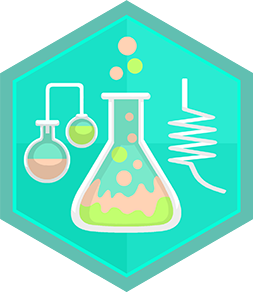Create a vinegar and baking soda explosion
Mix vinegar and baking soda to create a safe foaming eruption, observe gas production, and measure reaction strength with adult supervision.



Step-by-step guide to create a vinegar and baking soda explosion
Step 1
Put on your safety goggles.
Step 2
Put the tray on a stable table.
Step 3
Set the clear plastic bottle in the middle of the tray.
Step 4
Measure 1/2 cup of vinegar into the measuring cup.
Step 5
Pour the measured vinegar into the bottle using the funnel.
Step 6
Make a small paper packet that holds 1 teaspoon of baking soda.
Step 7
Place the ruler upright beside the bottle with the zero at the bottle base.
Step 8
Put the notebook and pencil next to the bottle to write observations.
Step 9
With an adult's help drop the baking soda packet into the bottle.
Step 10
Immediately start the timer.
Step 11
Watch the foam rise.
Step 12
Stop the timer when the foam reaches its highest point.
Step 13
Measure the foam height with the ruler and write the height and time in your notebook then change the amount of baking soda or vinegar and repeat to compare results.
Step 14
Share a photo and what you measured about your foaming eruption on DIY.org.
Final steps
You're almost there! Complete all the steps, bring your creation to life, post it, and conquer the challenge!


Help!?
What can I use if I don't have a funnel or safety goggles mentioned in the steps?
Roll a piece of paper into a cone as a funnel to pour the measured 1/2 cup of vinegar into the bottle and wear safety glasses or a face shield if safety goggles are unavailable.
The baking soda packet opened early or the foam started before I could start the timer—how do I fix that?
Fold the small paper packet that holds 1 teaspoon of baking soda tightly and seal it with tape so it won't open, have an adult drop it into the bottle while you immediately start the timer, and keep the tray under the bottle to catch overflow.
How can I adapt this volcano experiment for different ages?
For younger children pre-measure the 1/2 cup vinegar and prepare taped baking soda packets for an adult to drop while they watch and draw in the notebook, and for older kids let them change the amounts of baking soda or vinegar, time and measure the foam height with the ruler, and record results for comparison.
How can we extend or personalize the activity after completing the steps?
Try adding food coloring to the 1/2 cup vinegar, test different bottle sizes or varied baking soda/vinegar amounts to compare foam height and time with your ruler and timer, then share a photo and your measurements on DIY.org.
Watch videos on how to create a vinegar and baking soda explosion
Vinegar and Baking Soda Experiment | VOLCANO made of clay | Easy Science Experiment for Kids | DIY
Facts about chemistry experiments for kids
🧁 Baking soda (sodium bicarbonate) is used in baking because the CO2 it releases helps cakes and cookies rise.
🥫 Table vinegar is usually about 5% acetic acid, which is strong enough to make this safe, bubbly reaction.
🌋 The classic school 'volcano' uses this reaction because it makes a dramatic eruption of foam without heat or flames.
🧪 The fizz you see is carbon dioxide gas — the same kind of gas people breathe out when they exhale.
🎈 You can capture the CO2 in a balloon to see the gas, but never seal the reaction in a closed rigid bottle — pressure can build up.
How do I create a vinegar and baking soda explosion and measure reaction strength?
What materials do I need for a vinegar and baking soda eruption experiment?
What ages is this vinegar and baking soda experiment suitable for?
What are the benefits, safety tips, and easy variations for this activity?


One subscription, many ways to play and learn.
Only $6.99 after trial. No credit card required



